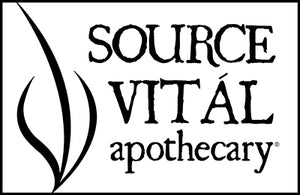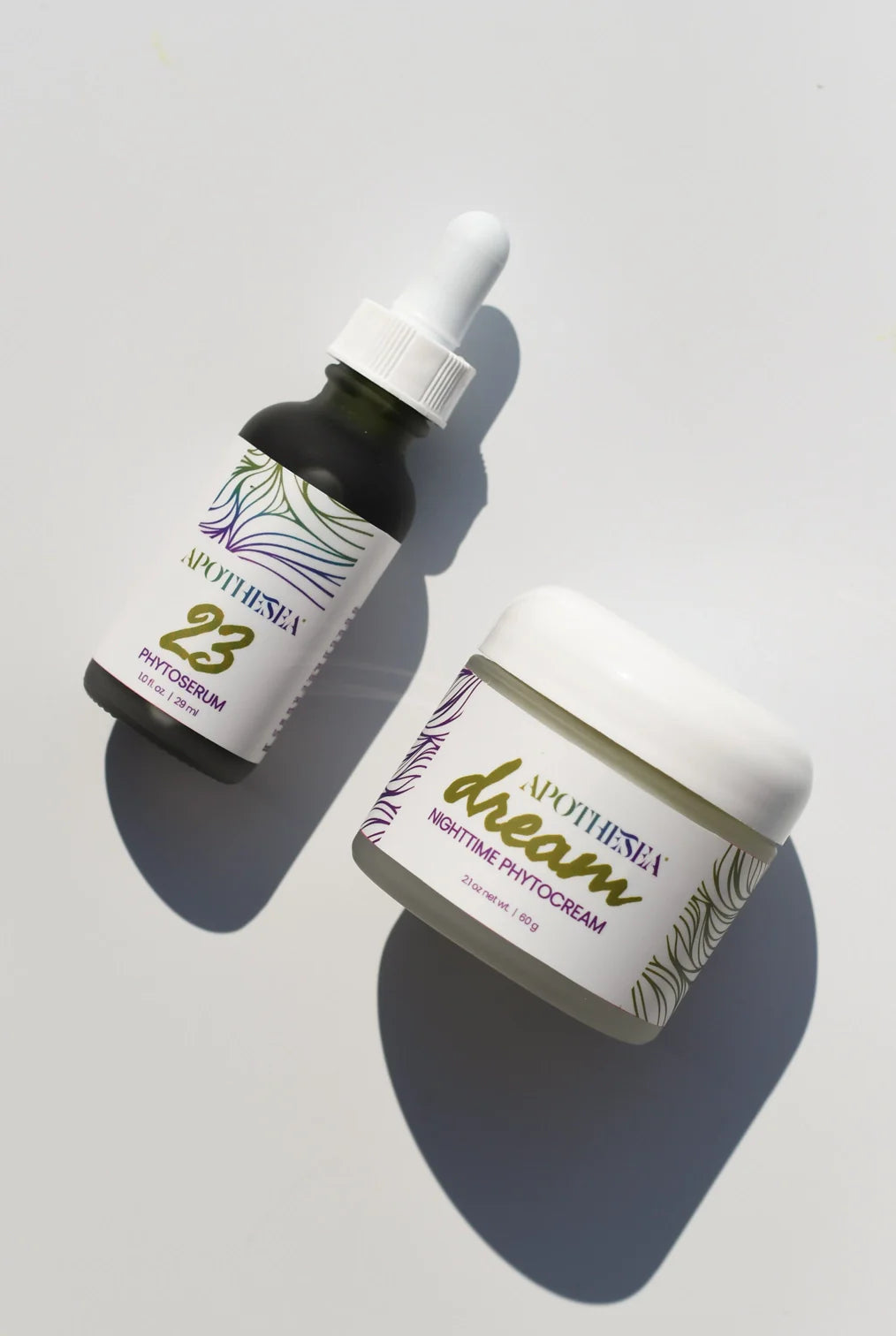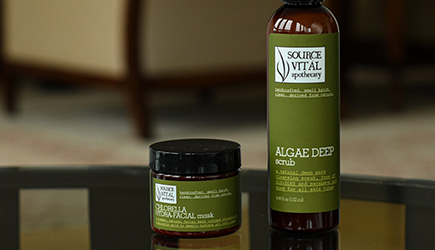How to Easily Identify & Care for Your Skin Type
So you’re staring at the computer screen reading about skin care products and most of them mention being good for normal, dry, combination or oily skin, just to name a few of the most common skin types. It’s hard to decide which product is best for you if you aren’t sure exactly where your skin fits in.
If you go to an esthetician and get a facial, you will learn about your skin type from a professional, but that may not always be an option. So let’s clear up some of the confusion.
There six main skin types:
- Normal
- Combination
- Dry
- Oily/acne
- Sensitive and
- Aged/mature
With just a bit of knowledge you will be able to better identify the correct products and protocols to properly care for your skin
Normal Skin
Let’s start with Normal Skin. I’m not sure there really are normal skin types any more considering our skin is constantly battling the pollutants in the air, more and more chemicals in the products we use (on our skin and in our homes), and the quality of food we eat. All of this can impact our skin’s health.
I prefer to think normal skin more accurately is non-problematic skin. This skin isn’t too dry or too oily. It may have a blemish from time-to-time but nothing major or frequent. Taking care of this skin is easy; it requires good cleansing, occasional exfoliation and moisturizing on a daily basis.
Combination Skin
Combination skin is just that—it has oily areas and dry areas. Most know about the ‘T’ zone. The skin around the nose, forehead and chin tend to be oily, while the rest of the face is dry. Each of these areas need to be treated separately.
Choosing facial cleansers and toners that are good for all skin types works well; however, choose treatment products and moisturizers that are formulated for specific issues (oily, dry, congested, etc.). For example, when using a facial mask, use a mask made for oily skin in the T zone and a different mask, made for dry skin, on the rest of the face. Sometimes working with the areas separately may help balance the skin so that the separate products become unnecessary.
Dry Skin
Dry skin takes a little more care. Dry skin can result from a variety of causes: medication, too much sun/wind, poor diet, normal aging, not drinking enough water, using harsh soaps and chemical-heavy products to clean the face. To treat dry skin, there are two different approaches—oil dry, which means oil glands are not producing enough oil to hydrate the skin, or water dry, which is dehydrated skin.
With oil dry skin, you may experience dry areas as well as oily areas, which is even more confusing. Just applying a heavy cream will not necessarily solve the problem – in fact it can aggravate the issue. Our own natural oil is our skin’s best moisturizer; the trick is getting the oil glands to cooperate. The best treatment is to use products that can stimulate the skin’s natural oil production, thereby providing good moisture.
Dehydrated skin has enough oil but may still feel dry and flaky. This type of skin will appear thin and you may even be able to see small capillaries near the surface of the skin. Additionally, the skin can appear to have a fine texture but feel coarse to the touch. To improve the look and feel of dehydrated skin and replace the lack of surface moisture using those products traditionally formulated for dry skin should significantly help.
A useful tip to for this skin type is to leave the skin slightly damp before applying moisturizer. This helps the skin to better drink in and retain more of the hydration it lacks. Another good idea for those with dehydrated skin (really for all of our skin, no matter what type!) is simply drink more water. A good rule of thumb is to drink ½ ounce of water per pound of body weight daily. So for someone weighing 150 pounds, that’s at least 75 ounces, or nearly 10 glasses of water each day.
Oily/Acne Skin
We are combining these two skin types because they often are closely related. Most acne skin is oily in origin although as with all things there are exceptions. Generally oily skin produces more oil than it needs, feels thicker than normal/dry skins and has larger pores. The production of excess oil often leads to pimples and blemishes.
There are several internal factors that also can cause oily skin
- Imbalances in hormones, especially in teenagers
- A diet high in fats and oils
- High stress levels can cause excess oil as a defense mechanism
- Hot, humid climates can stimulate the oil glands to produce more oil
It is common for people with oily skin to want to wash their face, thinking keeping it squeaky clean will prevent blemishes. Actually, this can actually aggravate this skin. As we mentioned with oil dry skin, by stripping skin of too much of its natural oil can actually kick start the skin into overdrive, overcompensating with even more oil production.
An upside, oily skin usually has fewer wrinkles and fine lines. However, the down side is the fine lines and wrinkles that do develop are deeper and more pronounced. If oily skin is not taken care of properly, dirt, dead cells and grease can clog up the follicles and create blemishes. In severe cases, this can lead to acne.
Acne skin is very similar to oily skin. We all know teenagers are prone to developing acne; it some cases it can also develop in adults. Acne can be very hard on self-esteem. We all want to look good and good skin plays a large role in that. If neglected, acne skin can lead to scars and pits that will be permanent.
Acne is not a disease; it is an indication that imbalances exist inside the body, often these imbalances are hormonal in nature. Acne can be controlled but it takes work. It takes time, persistence and discipline to maintain a good home routine--twice a day, every day—with the right kinds of products to produce results. In addition, acne can be greatly affected by working with an esthetician who can perform extractions to keep the skin cleaner and clearer.
Myth: We mentioned that oily skin is prone to large pores. There is one myth that we need to address about the size of pores. You cannot make a pore size smaller. Pores do not open and close at will; there is no muscle within a pore that allows it to expand and contract. Your pore size is based on heredity and, often, so is your skin type. Enlarged pores are mostly due to a build-up of debris inside the follicle—dead skin cells, excess oil, makeup. This build up stretches the pore opening, making it look larger.
The best fix for this is a good home care routine. Regular cleansing—both to remove dirt/makeup and deep cleansing—will go a long way to improving the appearance of pore size and bringing it back to normal. Regular exfoliation is also important. One a week is average; however, in the beginning, you can exfoliate twice a week for a few weeks.
Sensitive Skin
This type of skin can be a little bit harder to figure out. Sometimes sensitive skin can be one of the others types mentioned in this post that has not been cared for properly, or skin that is reacting to the wrong kinds of products. Other times there may be allergies or chronic skin conditions at play like rosacea, psoriasis or eczema. It is necessary to figure out what’s truly in play to properly care for irritated skin.
In general, sensitive skin is weakened skin. It is important to gently calm and nourish weakened skin until optimal health is returned. Using gentle products that do not contain harsh chemicals or synthetic fragrances and colors is a good starting place. Start simple and then you can add to your routine as the skin begins to heal.
Mature/Aged Skin
We can fight it kicking and screaming all the way but the reality is our skin is going to age eventually. The best thing we can do is slow down the process as much as possible. That includes avoiding all the behaviors that can prematurely age the skin.
When I was in facial school, I remember our instructor telling us “If you start getting regular facials in your 30’s, you can looking like you are 30 in your 40’s and keep it up and you’ll look like 40 in your 50’s and 50 in your 60’s.” The moral of the story, properly caring for the skin goes a long way!
So why is this category called Mature/ Aged skin? Mature skin is about biological age. As we mentioned previously, our skin is going to age, but we can try to slow the process. Aged skin is more about prematurely aging our skin due to lifestyle choices—smoking, alcohol, excess sugar consumption, too much sun exposure, poor skin care routines, etc. All are choices we make every day; however, when we’re in our teens and 20’s, we are too busy discovering life and who we are to think about what our skin will look like when we’re old—in our 40’s. So prevention is the key to anti-aging.
Of course, plastic surgery, fillers and botox are anti-aging treatments but those of us who prefer a more natural solution may not choose those options.
Regardless of whether you are dealing with mature or aged skin, the approach to treatment is the same. As we age, skin loses elasticity and collagen, which is what plumps our skin. You can test the elasticity of your skin by taking a small section of skin on the face or neck and pull slightly up on the skin. If the elasticity is good, the skin will immediately return to normal shape. If the skin is lacking elasticity, it will return to normal at a slower rate. As the collagen levels diminish, wrinkles, veins and even bones will be more visible as we lose our internal padding.
The eyes and neck tend to be the areas to show age first because both of these areas tend to have less oil glands than other parts of the face. Brown spots are another sign of aging, primarily due to overexposure to the sun over the years.
The skin care market is full of anti-aging product. Developing an excellent skin care regime for home is crucial for the fight against the signs of aging.
You will want a skin cream that is a little richer than what you have used in the past. Keeping the skin well hydrated with the right product is a definite benefit as it will give the skin a plumped, brighter appearance. Aged/Mature skins typically will want to use richer skin creams than what they may have used in the past.
Since the first signs of aging are usually the fine lines around the eyes, a good eye cream is imperative. When you apply anything to the eye area, develop the habit of only using only your ring finger. It is the weakest of our fingers and the least likely to pull and drag the skin. Pat on cream as opposed to rubbing. When you clean your eye makeup off, be more aware of not dragging the skin. A good makeup remover will make it easier to be gentle in this process.
Using a good treatment product that targets aging is also important. These products will usually be a concentrated serum or an intensive that is full of extracts and other ingredients good for replenishing the nutrients and moisture mature/aged skin lack. The most important thing is being diligent with your morning and night routines to cleanse, treat and moisturize your skin.
Once you know your skin type, you can focus your skin care budget on products that are best for you. You can also check out our handy Skin Care Primer to help you understand what products work best for your complexion!
Good luck with your adventure into healthy, hydrated, vibrant skin. If you have any questions, feel free to include them in the comment section below or contact us at 1-800-880-6457.





Leave a comment